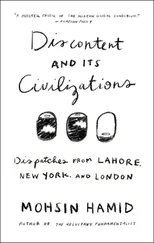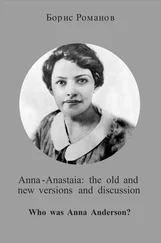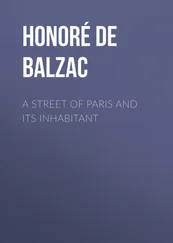Henry Edwards - Old and New Paris - Its History, Its People, and Its Places, v. 1
Здесь есть возможность читать онлайн «Henry Edwards - Old and New Paris - Its History, Its People, and Its Places, v. 1» — ознакомительный отрывок электронной книги совершенно бесплатно, а после прочтения отрывка купить полную версию. В некоторых случаях можно слушать аудио, скачать через торрент в формате fb2 и присутствует краткое содержание. Жанр: foreign_antique, foreign_prose, Путешествия и география, на английском языке. Описание произведения, (предисловие) а так же отзывы посетителей доступны на портале библиотеки ЛибКат.
- Название:Old and New Paris: Its History, Its People, and Its Places, v. 1
- Автор:
- Жанр:
- Год:неизвестен
- ISBN:нет данных
- Рейтинг книги:4 / 5. Голосов: 1
-
Избранное:Добавить в избранное
- Отзывы:
-
Ваша оценка:
- 80
- 1
- 2
- 3
- 4
- 5
Old and New Paris: Its History, Its People, and Its Places, v. 1: краткое содержание, описание и аннотация
Предлагаем к чтению аннотацию, описание, краткое содержание или предисловие (зависит от того, что написал сам автор книги «Old and New Paris: Its History, Its People, and Its Places, v. 1»). Если вы не нашли необходимую информацию о книге — напишите в комментариях, мы постараемся отыскать её.
Old and New Paris: Its History, Its People, and Its Places, v. 1 — читать онлайн ознакомительный отрывок
Ниже представлен текст книги, разбитый по страницам. Система сохранения места последней прочитанной страницы, позволяет с удобством читать онлайн бесплатно книгу «Old and New Paris: Its History, Its People, and Its Places, v. 1», без необходимости каждый раз заново искать на чём Вы остановились. Поставьте закладку, и сможете в любой момент перейти на страницу, на которой закончили чтение.
Интервал:
Закладка:
H. Sutherland Edwards
Old and New Paris: Its History, Its People, and Its Places, v. 1
CHAPTER I
PARIS: A GENERAL GLANCE
“PARIS,” said Heinrich Heine, “is not simply the capital of France, but of the whole civilised world, and the rendezvous of its most brilliant intellects.” The art and literature of Europe were at that time represented in Paris by such men as Ary Scheffer, the Dutch painter, Rossini, the Italian composer, the cosmopolitan Meyerbeer, and Heine himself. Towards the close of the eighteenth century most of the European Courts, with those of Catherine II. and Frederick the Great prominent among them, were regularly supplied with letters on Parisian affairs by Grimm, Diderot, and other writers of the first distinction, who, in their serious moments, contributed articles to the Encyclopédie . At a much remoter period Paris was already one of the most famous literary capitals of Europe; nor was it renowned for its literature alone. Its art, pictorial and sculptural, was also celebrated, and still more so its art manufactures; while of recent years the country of Auber and Gounod, of Bizet, Massenet and Saint-Saëns, has played a leading part in the world of music. Paris, too, has from the earliest times been a centre of science and philosophy. Here Abélard lectured, and here the first hospitals were established. Then, again, Paris has a military history of singular interest and variety. It has been oftener torn within its walls by civic conflicts, and attacked from without by the invader, than any other European city; while none has undergone so many regular sieges as the capital of the country of which Frederick the Great used to say that, if he ruled it, not a shot should be fired in Europe without his permission.
Paris is at once the most ancient and the most modern capital in Europe. Great are the changes it has undergone since it first took form, eighteen centuries ago, as a fortress or walled town on an island in the middle of the Seine; and at every period of its history we find some chronicler dwelling on the disappearance of ancient landmarks. Whole quarters are known to have been pulled down and rebuilt under the second Empire. But ever since the Revolution of 1789, under each successive form of government and in almost every district, straggling lanes have been giving way gradually to wide streets and stately boulevards, and suburb after suburb has been merged into the great city.
The Chaussée d’Antin was at the end of the last century a chaussée in fact as well as in name: a mere high-road, that is to say; and there were people living under the government of Louis-Philippe who claimed to have shot rabbits on the now densely populated Boulevard Montmartre.
The greatest changes, however, in the general physiognomy of Paris date from the Revolution, when, in the first place, as if by way of symbol, the hated fortress was demolished in which so many victims of despotism had languished. “Athens,” says Victor Hugo, “built the Parthenon, but Paris destroyed the Bastille.” In the days when the great State prison was still standing, the broad, well-built Rue Saint-Antoine, in its immediate neighbourhood, used to be pointed to by antiquarians as covering the ground where King Henry II. was mortally wounded in a tournament by Montgomery, an officer in the Scottish Guard. It was there, too, that, after the death of their protector, the “minions” of Henry II. slaughtered one another.
The now thickly inhabited Place des Victoires, where stands the statue of Louis XIV., lasting monument of kingly pride and popular adulation, was at one time the most dangerous part of the capital. In the open space now enclosed by lordly mansions and commodious warehouses thieves and murderers held their nightly assemblies, or even in the face of day committed depredations on the passers-by. “Could a better site have been chosen,” asks an historian of the last century, “for the effigy of that royal robber, born for the ruin of his subjects and the disturbance of Europe: who aimed at universal monarchy and sacrificed the wealth and happiness of a whole kingdom to pursue an empty shadow; who lived a tyrant and died an idiot?”
Not far distant, the Halles, or general markets, stand on the spot where Charles V. made a famous speech against Charles, surnamed the Mischievous, King of Navarre; when the former was hissed and hooted by the mob because he had neither the good looks, the eloquence, nor the reasoning power of his antagonist. It was here, too, that the first dramas were acted in France; and here, significantly enough, that Molière was born.
At the Butte Saint-Roch, now remembered chiefly by the church of the same name, the Maid of Orleans was wounded during the siege of Paris, then in the hands of the English. Joan of Arc was not at this time – not, at least, with the Parisians – the popular heroine she has since become. Detesting Charles VII. and all his supporters, they could not love the inspired girl whose example had restored the courage of the king’s troops. A Parisian of that day, who had witnessed the siege, describes her as a “fiend in woman’s guise.”
The bell may still be heard of Saint-Germain-l’Auxerrois; the very bell, it is asserted, that called the faithful to the massacre of St. Bartholomew. Near the church from which the tragic signal rang forth stands the palace from whose windows Charles IX. fired upon the unhappy Huguenots as they sought safety by swimming across the Seine; and close at hand used to be pointed out another window from which money was thrown to an agitated crowd in order to keep it from attending Molière’s funeral, at which the mob proposed, not to honour the remains of the illustrious dramatist, but to insult them.
It was in the old Rue du Temple that the Duke of Burgundy fell by the hand of his assassin, the Duke of Orleans, only brother of Charles VI., who, though a madman and an idiot, was suffered to remain on the throne; and it was in this same Rue du Temple that Louis XVI. and Marie-Antoinette were confined before being taken to the guillotine. What scenes has not the Place de Grève witnessed! from the burning of witches to the torture of Damiens, and from the atrocious cruelties inflicted upon this would-be regicide to the first executions under the Revolution, when the cry of “A la lanterne!” (to the lamp-post, that is to say, of the Place de Grève) was so frequently heard.
But the most revolutionary spot in this, the most revolutionary capital in the world, is to be found in the gardens of the Palais Royal; those gardens from whose trees Camille Desmoulins plucked the leaves which the besiegers of the Bastille were to have worn in their hats as rallying signals. Here, too, assembled the journeymen printers, who, their newspapers having been suppressed by Charles X., determined, under the guidance of the journalists – their natural leaders on such an occasion – to reply by force to the armed censorship of the Government. Again, in 1848, the Palais Royal Gardens witnessed the first manifestations of discontent, though it was a pistol-shot fired on a fashionable part of the boulevard that precipitated the collision between the insurgents and the troops. The next morning, at breakfast, Louis-Philippe was told that he had better abdicate; and an hour afterwards an old gentleman, with a portfolio under his arm, was seen to take a cab on the Place de la Concorde, and drive off in the direction of Saint-Cloud, whence he reached the coast of Normandy, and in due time the shores of England.
Paris possesses one of the most ancient and one of the most characteristically modern churches in Europe – the venerable Notre-Dame, and in sharp contrast, the fashionable Madeleine, celebrated for the splendour of its essentially mundane architecture, the luxurious attire of its female frequenters, the beauty of its music, and the eloquence of its preachers. The first stone of Notre-Dame was laid, as Victor Hugo puts it, by Tiberius, who, recognising the site of the future cathedral as well-fitted for a temple, began by erecting an altar “to the god Cerennos and to the bull Esus.” In like manner, on the hill of Sainte-Geneviève, where now stands the edifice known as the Pantheon, Mercury was at one time worshipped.
Читать дальшеИнтервал:
Закладка:
Похожие книги на «Old and New Paris: Its History, Its People, and Its Places, v. 1»
Представляем Вашему вниманию похожие книги на «Old and New Paris: Its History, Its People, and Its Places, v. 1» списком для выбора. Мы отобрали схожую по названию и смыслу литературу в надежде предоставить читателям больше вариантов отыскать новые, интересные, ещё непрочитанные произведения.
Обсуждение, отзывы о книге «Old and New Paris: Its History, Its People, and Its Places, v. 1» и просто собственные мнения читателей. Оставьте ваши комментарии, напишите, что Вы думаете о произведении, его смысле или главных героях. Укажите что конкретно понравилось, а что нет, и почему Вы так считаете.












